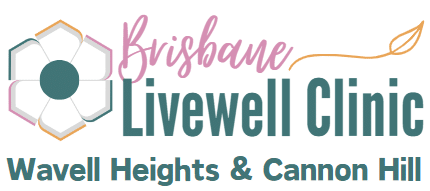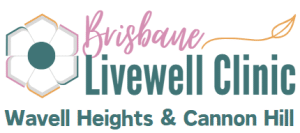Understanding Bowen Therapy
When considering Bowen Therapy as a potential remedy for your injuries or physical pain, it's important to have a clear understanding of its origins, development, and techniques. Bowen Therapy, named after its creator Tom Bowen of Geelong, Australia, has evolved into a widely practiced technique with over 40,000 practitioners in approximately 59 countries or regions worldwide.
Origin and Development
Tom Bowen developed this therapeutic technique between 1959 and 1982, despite not having any formal training in a specific modality or discipline. He integrated various methods of complementary medicine that he found to be the most efficient, creating a unique approach to healing and pain relief (History of Bowen Technique).
In 1974, Oswald Rentsch met Mr. Bowen at a national health conference in Adelaide, Australia. Impressed by the effectiveness of the technique, Rentsch was allowed to take notes. After Mr. Bowen's death, Rentsch was authorized to teach and spread the technique, leading to its wider adoption within and outside Australia. The Australian Academy of Bowen Therapy, founded by Oswald and Elaine Rentsch in 1987, aimed to preserve the original technique, known as Bowtech® – The original Bowen Technique. By the year 2000, more than 26,000 therapists worldwide were using this technique (History of Bowen Technique).
Techniques and Variations
Bowen Therapy consists of a series of specific movements performed by the practitioner on various areas of the body. These movements involve gentle rolling motions over muscles, tendons, and connective tissues. The purpose of these movements is to stimulate the body's innate healing responses and restore balance.
While the original Bowen Technique is widely taught and practiced, there are also variations and adaptations of the technique. Some of these include Fascial Kinetics, Neurostructural Integration Technique (NST), Smart Bowen®, and Fascia Bowen, among others. These variations may incorporate additional techniques or focus on specific aspects of the therapy, but they all share the underlying principles and foundations of the original Bowen Therapy.
When seeking Bowen Therapy treatment, it is important to find a qualified Bowen therapist who has received proper training and certification. A skilled practitioner will be knowledgeable about the various techniques and adaptations, allowing them to tailor the treatment to your specific needs.
Understanding the origins and techniques of Bowen Therapy provides a solid foundation for making an informed decision about whether it is the right approach for your injuries or physical pain. In the following sections, we will explore the benefits of Bowen Therapy, compare it to Craniosacral Therapy, and provide insights into choosing the therapy that best suits your needs.
Bowen Therapy Benefits
Bowen Therapy, developed by Tom Bowen of Geelong, Australia, is a pain management practice that focuses on gentle hand movements applied to specific points on the body. This therapy aims to massage muscles, nerves, tendons, and fascia, stimulating the body's self-healing process. Bowen Therapy has gained popularity worldwide and is known for its effectiveness in addressing various conditions, particularly those related to the musculoskeletal system.
Pain Management
One of the primary benefits of Bowen Therapy is its effectiveness in managing pain. The gentle movements and techniques used in Bowen Therapy help to stimulate the body's natural healing response and promote relaxation. This can lead to a reduction in pain levels and increased comfort. Bowen Therapy has shown positive results in managing various types of pain, including back pain, neck pain, joint pain, and muscle tension.
Musculoskeletal Health
Bowen Therapy is particularly effective in addressing conditions related to the musculoskeletal system. The gentle rolling movements and pressure applied during the therapy help to release tension and restore balance in the muscles, tendons, and fascia. This can alleviate muscle stiffness, improve range of motion, and enhance overall musculoskeletal health.
By targeting specific points on the body, Bowen Therapy aims to stimulate the body's innate ability to heal itself. It is a non-invasive and holistic approach that considers the whole person, taking into account physical, emotional, and energetic aspects. Bowen Therapy may be beneficial for various conditions, including sports injuries, repetitive strain injuries, fibromyalgia, sciatica, and postural imbalances.
When considering Bowen Therapy, it is essential to consult with a qualified Bowen therapist or Bowen practitioner to discuss your specific needs and goals. They can provide you with personalized guidance and treatment tailored to your condition.
In the next sections, we will explore Craniosacral Therapy, another alternative therapy that focuses on the body's natural healing abilities and offers its own unique benefits. This will help you make an informed decision when choosing the right therapy for your needs.
Exploring Craniosacral Therapy
Craniosacral therapy has gained recognition as a holistic therapy that focuses on the subtle movements and rhythms of the cranial bones, spinal cord membranes, and cerebrospinal fluid. To better understand this therapy, let's explore its historical background and the principles it is based on.
Historical Background
The roots of craniosacral therapy can be traced back to the field of osteopathy, which was initially developed by Andrew Taylor Still in the 19th century. Osteopathy aimed to remove restrictions in the body, allowing it to heal naturally without toxic medications. This approach was observed during the Civil War and a meningitis epidemic, where patients who received osteopathic treatments showed significant improvements in their health (Gentle Healing Arts).
In the mid-1970s, an osteopath named John Upledger studied a rhythmic fluid motion within the human body, particularly around the brain and spinal cord membranes. This led to the development of craniosacral therapy (CST), which focuses on releasing restrictions in the body, allowing for improved healing processes (Gentle Healing Arts). Since then, CST has evolved and gained recognition as a distinct therapeutic approach.
Principles and Approaches
Craniosacral therapy encompasses various approaches that share a common foundation. One of the most well-known approaches is the biomechanical approach, developed by John Upledger. This approach emphasizes evaluating and treating the body's mechanical components, including the cranial bones, dural membranes, and the flow of cerebrospinal fluid. The Upledger Institute has been teaching the biomechanical approach to CST for over thirty years, extending its practice beyond osteopathy to professionals such as physical therapists (Gentle Healing Arts).
Another approach to craniosacral therapy is the biodynamic approach, which is based on the ideas of William Sutherland, an osteopath who investigated the movement of cranial bones in 1899. Sutherland's research led to the discovery of subtle motions and pulsations in the cranium, which he later conceptualized as primary respiration. The biodynamic approach emphasizes a direct orientation to the universal and conditional forces of life, requiring practitioners to deepen perceptual clarity, enhance relational skills, and appreciate the presence of primary respiration and conditional forces within the system.
Over the years, additional schools of thought and approaches have emerged within the field of craniosacral therapy. These approaches include the visionary approach developed by Hugh Milne, DO, and other schools of thought that have contributed to the evolution and expansion of CST (Gentle Healing Arts). This diversity within craniosacral therapy allows practitioners to choose an approach that resonates with their philosophy and therapeutic goals.
By exploring the historical background and principles of craniosacral therapy, you can gain a deeper understanding of this therapeutic modality. Whether you are considering craniosacral therapy for its potential benefits or seeking to learn more about alternative therapies, it's important to consult with a qualified practitioner who can guide you through the process and provide personalized care.
Comparing Bowen Therapy & Craniosacral Therapy
When seeking pain relief and therapeutic treatment, two popular manual therapies to consider are Bowen therapy and craniosacral therapy. While both modalities focus on promoting overall well-being, they differ in their treatment methods and targeted conditions.
Treatment Methods
Bowen therapy, developed by Tom Bowen of Geelong, Australia, utilizes gentle hand movements on specific points to massage muscles, nerves, tendons, and fascia (Bowen Therapy Professional Association). This therapy aims to stimulate the body's self-healing process by addressing restrictions and imbalances within the musculoskeletal system. The technique is gentle and non-invasive, with brief pauses between each set of movements to allow the body to respond and reset.
On the other hand, craniosacral therapy focuses on the craniosacral system, which includes the bones, membranes, and fluid that surround and protect the brain and spinal cord (Cranial Therapy Centre). Practitioners use light touch to evaluate and gently manipulate the craniosacral rhythm, aiming to release any restrictions or imbalances within the system. This therapy aims to stimulate the body's self-healing mechanisms and promote relaxation.
Targeted Conditions
Bowen therapy is particularly effective for conditions related to the musculoskeletal system, making it a suitable choice for individuals experiencing pain and discomfort in their muscles, joints, tendons, or fascia. It can provide relief for conditions such as neck pain, backache, migraine, fibromyalgia, and pelvic pain (Townsend Naturopathic Clinic). Bowen therapy is also commonly used to address sports injuries, improve posture, and alleviate stress and tension.
Craniosacral therapy, on the other hand, has shown significant effects in chronic pain disorders, including neck pain, backache, migraine, fibromyalgia, and pelvic pain. Additionally, craniosacral therapy has been known to alleviate diverse symptoms such as chronic pain, ear infections, jaw pain, joint stiffness, pregnancy problems, depression, autism, anxiety, dyslexia, spinal cord injuries, coordination impairments, and anger (Cranial Therapy Centre). It aims to promote relaxation, balance, and the body's natural healing processes.
When considering which therapy may be more suitable for your needs, it's important to consult with a qualified practitioner who can assess your specific condition and provide personalized guidance. They can help you determine which approach may be more beneficial for your targeted symptoms and overall well-being.
By understanding the treatment methods and targeted conditions of Bowen therapy and craniosacral therapy, you can make an informed decision and choose the therapy that aligns with your specific needs and goals. Remember, it's always best to consult with a healthcare professional or therapist who specializes in these therapies to ensure you receive the most appropriate and effective treatment.
Effectiveness and Research
When considering the effectiveness of Bowen therapy and craniosacral therapy, it's valuable to examine the existing research. Studies have been conducted to evaluate the impact of these therapies, particularly in the context of chronic pain and sleep quality.
Studies on Chronic Pain
Both Bowen therapy and craniosacral therapy have demonstrated significant effects in managing chronic pain disorders such as neck pain, backache, migraine, fibromyalgia, and pelvic pain. These therapies aim to address restrictions or impairments in the craniosacral system and promote healing and well-being.
Although further research is needed to fully understand the mechanisms behind the effectiveness of these therapies, the existing evidence suggests that they can provide relief for individuals suffering from chronic pain conditions. If you are seeking pain management options, it may be worthwhile to explore the potential benefits of Bowen therapy and craniosacral therapy.
Sleep Quality and Therapy Impact
In addition to chronic pain, sleep quality is another aspect that can greatly impact an individual's well-being. Complementary and alternative therapies, including Bowen therapy and craniosacral therapy, have been explored in the context of sleep quality for patients with fibromyalgia syndrome (FMS) (ScienceDirect).
A randomized controlled trial is currently underway to compare the effectiveness of Craniosacral therapy, Bowen therapy, static touch, and a standard exercise program on sleep quality in individuals with FMS. The trial involves 132 participants who receive supervised sessions for 12 weeks, followed by home exercises. The primary outcome measure of the study is the Pittsburgh Sleep Quality Index (PSQI), which assesses various aspects of sleep quality. Secondary outcomes include pressure pain threshold, quality of life, physical function, fatigue, pain catastrophizing, kinesiophobia, and positive-negative affect.
While the results of this ongoing trial are not yet available, the study aims to determine the potential impact of these therapies on sleep quality. By altering the autonomic nervous system function and promoting a switch from sympathetic to parasympathetic dominance, Bowen therapy and craniosacral therapy may influence sleep quality in individuals with FMS.
As research continues to shed light on the effectiveness of these therapies, it's important to consult with a qualified practitioner to discuss your specific needs and determine the most appropriate treatment approach.
The effectiveness of Bowen therapy and craniosacral therapy can vary depending on individual circumstances, and it's essential to consider factors such as the severity of the condition, personal preferences, and recommendations from healthcare professionals. Taking these considerations into account will help you make an informed decision when choosing the therapy that best suits your needs.
Choosing the Right Therapy
When it comes to choosing between Bowen Therapy and Craniosacral Therapy, it's important to find the therapy that best suits your needs. Each therapy has its own unique approach and benefits. Here are some considerations to help you make an informed decision.
Finding the Best Fit
To determine which therapy is the best fit for you, consider the specific issues you are seeking treatment for. Bowen Therapy is particularly effective for conditions related to the musculoskeletal system. It uses gentle hand movements on specific points to massage muscles, nerves, tendons, and fascia, aiding the body's self-healing process (Townsend Naturopathic Clinic). On the other hand, Craniosacral Therapy focuses on rebalancing the flow of cerebral spinal fluid through the cranial sacral system. It is beneficial for a wide range of conditions, including stress, anxiety, TMJ, chronic pain, headaches and migraines, infant colic, central nervous system disorders, and more.
Consider your specific needs and the areas you want to target. If you are experiencing musculoskeletal issues or are seeking pain management, Bowen Therapy may be a suitable choice. If you are dealing with conditions beyond the musculoskeletal system, such as stress, anxiety, or central nervous system disorders, Craniosacral Therapy may be more appropriate.
Considerations for Treatment
When deciding on a therapy, there are a few additional factors to consider. First, think about your personal preferences. Some individuals may prefer the gentle, non-invasive nature of Bowen Therapy, while others may find the light touch and rebalancing approach of Craniosacral Therapy more appealing. Consider which therapy aligns with your comfort level and overall treatment goals.
Another consideration is the availability of practitioners in your area. Look for Bowen therapists and Craniosacral therapists near you to ensure convenient access to treatment. You can search online directories or ask for recommendations from healthcare professionals or friends who have undergone similar therapies.
Lastly, take into account any specific contraindications or precautions associated with the therapies. While both Bowen Therapy and Craniosacral Therapy are generally safe and well-tolerated, it's important to discuss any pre-existing medical conditions or concerns with your therapist before starting treatment. They can provide guidance and ensure that the therapy is appropriate for your individual circumstances.
By considering your specific needs, personal preferences, availability of practitioners, and any contraindications, you can make an informed decision about which therapy is the right fit for you. Remember, the goal is to find a therapy that addresses your specific concerns and supports your overall well-being.
Last Updated on 15 June 2024 by Brisbane Livewell Clinic









